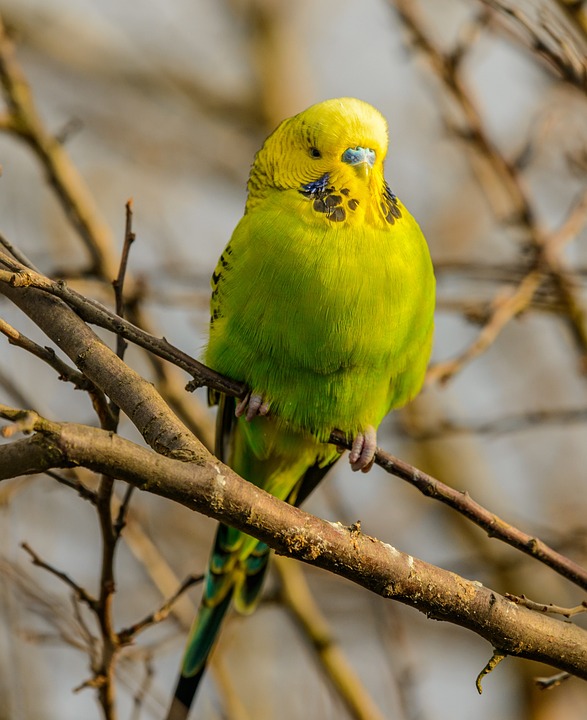Parrots are highly intelligent and social creatures that require mental and physical stimulation to thrive. Providing them with suitable climbing structures is crucial for their overall well-being. In this article, we will explore how different climbing structures impact parrot behavior and discuss their mental and physical health benefits.
1. The Importance of Climbing for Parrots:
1.1 Natural Climbing Instincts:
Parrots have a natural instinct to climb and explore their surroundings. In the wild, they use tree branches and other natural structures to move around, search for food, and interact with their environment. Therefore, providing them with climbing structures in captivity allows them to fulfill this instinctual behavior.
1.2 Exercise and Physical Health:
Climbing structures offer parrots the opportunity to engage in physical exercise. Climbing, hanging, and balancing on different surfaces help strengthen their muscles and improve their overall physical health. Regular physical activity can also prevent obesity and related health issues in parrots.
1.3 Mental Stimulation and Enrichment:
Climbing structures provide mental stimulation and enrichment for parrots. They can explore different textures, heights, and surfaces, which stimulate their senses and promote cognitive development. Additionally, climbing challenges their problem-solving skills and keeps their minds active and engaged.
2. Types of Climbing Structures for Parrots:
2.1 Rope Perches and Swings:
Rope perches and swings mimic the natural branches that parrots would encounter in the wild. They provide a flexible and dynamic surface for climbing and swinging, which helps strengthen the parrot’s feet and leg muscles.
2.2 Ladders and Step-up Perches:
Ladders and step-up perches offer a structured climbing experience for parrots. They can climb up and down, providing them with exercise and allowing them to explore their environment from different heights.
2.3 Branches and Natural Wood Perches:
Branches and natural wood perches provide a more natural and diverse climbing experience for parrots. They offer different textures and diameters, which helps exercise their feet and beaks. Natural wood perches also provide mental stimulation as parrots can chew on them, mimicking their natural foraging behavior.
2.4 Play Gyms and Activity Centers:
Play gyms and activity centers are larger structures that offer multiple climbing opportunities, as well as additional features such as toys, swings, and feeding stations. These structures provide a variety of exercises and mental stimulation, keeping parrots entertained for extended periods.
3. Impact of Climbing Structures on Parrot Behavior:
3.1 Promoting Natural Behaviors:
Climbing structures allow parrots to engage in natural behaviors such as climbing, hanging, swinging, and exploring. By fulfilling these natural instincts, parrots are less likely to develop behavioral issues or engage in destructive behaviors.
3.2 Reducing Boredom and Stereotypical Behaviors:
Boredom and lack of mental stimulation can lead to stereotypical behaviors, such as feather plucking or excessive screaming. Climbing structures provide parrots with a stimulating and enriching environment, reducing the likelihood of these behaviors.
3.3 Building Confidence and Independence:
Climbing structures help parrots build confidence and independence. As they explore and conquer different climbing challenges, they become more self-assured and develop a sense of accomplishment.
3.4 Strengthening Bond with Owners:
Climbing structures can be used as a tool for positive interaction between parrots and their owners. By incorporating training sessions or interactive playtime on the climbing structures, parrots can strengthen their bond with their caregivers.
4. Choosing the Right Climbing Structures for Your Parrot:
4.1 Size and Appropriateness:
Consider the size and species of your parrot when selecting climbing structures. Ensure that the structures are appropriate for their size and provide enough space for movement and comfort.
4.2 Material and Safety:
Choose climbing structures made from bird-safe materials that are non-toxic and durable. Avoid structures with sharp edges or small parts that could pose a choking hazard.
4.3 Variety and Rotational Use:
Provide a variety of climbing structures to prevent boredom and provide mental stimulation. Additionally, regularly assess and rotate the climbing structures to keep your parrot engaged and happy.
5. Frequently Asked Questions (FAQs):
Q1: What should I consider when selecting a climbing structure for my parrot?
A: Consider the size, species, and safety of the climbing structure. Ensure that it provides enough space and stimulation for your parrot.
Q2: Can using climbing structures help prevent or reduce feather plucking?
A: Yes, providing climbing structures can help reduce feather plucking by offering mental stimulation and preventing boredom.
Q3: How often should I change or rotate the climbing structures in my parrot’s cage?
A: It is recommended to regularly assess and rotate the climbing structures to keep your parrot’s environment engaging and prevent boredom.
Q4: Is it necessary to have multiple climbing structures for a single parrot?
A: Having multiple climbing structures provides variety and allows the parrot to engage in different activities. However, it is not necessary as long as the parrot has access to suitable climbing structures.
Q5: Can I make my own DIY climbing structures for my parrot?
A: Yes, you can make DIY climbing structures using bird-safe materials. However, ensure that they are sturdy, safe, and appropriate for your parrot’s size.
Conclusion:
Understanding parrot behavior and providing them with suitable climbing structures is vital for their mental and physical well-being. By selecting the right climbing structures and providing variety, you can promote natural behaviors, reduce boredom, and strengthen your bond with your feathered friend. Remember to prioritize safety and regularly assess and rotate the climbing structures to keep your parrot engaged and happy.









